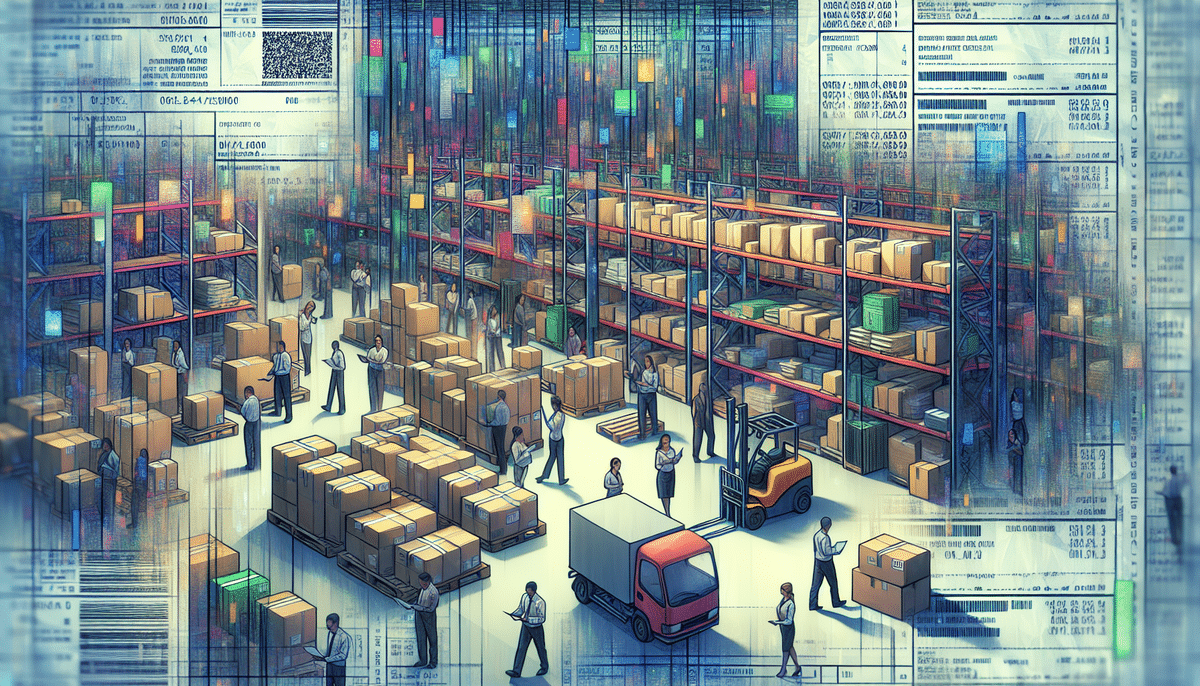Uncovering the Hidden Fulfillment Costs of Businesses
Running a successful business requires significant hard work, financial investment, and dedication to providing quality services and products to your customers. Additionally, businesses must strategically manage their expenses, which involves understanding the hidden costs that can impact their bottom line. One such often-overlooked expense is fulfillment costs—the expenses associated with delivering products and services to customers. In this article, we will explore the importance of uncovering and managing hidden fulfillment costs in your business.
Why Businesses Need to Pay Attention to Their Fulfillment Costs
Generating revenue is essential for any business to survive and thrive. Keeping costs low while delivering excellent service is crucial to success. However, many businesses fail to account for the costs associated with their fulfillment process, which can significantly impact their overall financial health. By understanding hidden costs and taking steps to manage them, businesses can improve profitability and maintain a competitive edge.
One of the hidden costs associated with fulfillment is the cost of returns. Returns can be a significant expense, especially for businesses selling products online. Customers may return items for various reasons, including receiving damaged or defective products or simply changing their minds. Implementing a clear and efficient returns process is vital to minimizing the impact on the bottom line. This can include offering free returns, providing clear return instructions, and streamlining the returns process to reduce the time and resources required.
The Impact of Hidden Fulfillment Costs on Your Business's Bottom Line
Hidden fulfillment costs can quickly accumulate, eroding a business's profit margins. For instance, offering free shipping might seem attractive to customers, but the cost of shipping can add up over time, ultimately affecting overall profitability. Other examples of hidden fulfillment costs include warehousing and storage expenses, labor costs, and the cost of shipping supplies. Ignoring these expenses can lead to negative cash flow, which can hinder a business's ability to grow and thrive.
To mitigate these costs, businesses should regularly review their fulfillment expenses and seek ways to reduce them. Optimizing inventory management to lower storage costs and minimize waste is one effective strategy. Additionally, negotiating better rates with shipping carriers or exploring alternative shipping options can lead to significant savings. By proactively managing hidden fulfillment costs, businesses can enhance their bottom line and ensure long-term success.
Understanding the True Cost of Fulfillment for Your Business
Comprehending the true cost of fulfillment requires a holistic approach to examining all expenses associated with delivering products or services. This includes direct costs like shipping fees and indirect expenses such as inventory management, handling damaged goods, and addressing customer service inquiries related to fulfillment. A comprehensive understanding of these costs enables businesses to assess their true expenses and make informed decisions regarding pricing and overall strategy.
Returns are one of the most significant hidden costs of fulfillment. When customers return products, businesses not only lose the revenue from the initial sale but also incur additional costs like restocking fees, shipping fees, and potential damage to the returned items. Factoring in these costs is essential for accurately assessing the true cost of fulfillment.
Customer satisfaction is also closely linked to fulfillment costs. Issues like late deliveries, damaged products, and poor customer service can lead to negative reviews and loss of customers. Investing in high-quality fulfillment processes and customer service can enhance a business's reputation, retain customers, and ultimately lead to increased revenue and profitability.
How to Calculate Your Business's Fulfillment Costs
Calculating fulfillment costs is crucial for long-term success. Start by listing all costs associated with your fulfillment process, including packing materials, shipping fees, and labor costs. Categorize these expenses and track them over time to identify patterns and areas where costs can be reduced.
Fulfillment costs can vary based on the type of product sold and the shipping methods offered. For example, selling fragile items may require more expensive packaging materials to ensure safe delivery, while offering expedited shipping options can increase shipping fees. Understanding these unique factors allows businesses to make informed decisions to optimize their fulfillment process and improve their bottom line.
Top Hidden Costs That Every Business Needs to Consider for Fulfillment
Several hidden costs are associated with fulfillment that businesses must consider to improve cost management and increase profitability. Some of these hidden costs include warehouse expenses, reverse logistics costs, and software and technology expenditures. Calculating and managing these costs helps businesses avoid unnecessary expenses and stay competitive.
Shipping and handling costs are another critical hidden expense. These costs encompass packaging materials, labor costs for packing and shipping, and shipping fees charged by carriers. Shipping and handling costs can vary significantly based on product size and weight, destination, and chosen shipping method. Carefully calculating these costs and incorporating them into pricing strategies ensures that businesses do not lose money on shipping and handling.
The Importance of Accurate Cost Estimation in Business Fulfillment
Accurate cost estimation is vital for effective cost management in business fulfillment. Inaccurate estimates can lead to incorrect pricing strategies, harming a business's bottom line. By thoroughly evaluating and understanding the true costs of fulfillment, businesses can make informed decisions regarding pricing, marketing, and overall strategy.
One key benefit of accurate cost estimation is the ability to identify areas where costs can be reduced. Understanding the true costs of fulfillment helps businesses spot inefficiencies in their processes and implement changes to lower costs, leading to increased profitability and a competitive market advantage.
Additionally, accurate cost estimation allows businesses to forecast future costs. By analyzing historical data and trends, businesses can predict future expenses and adjust their strategies accordingly. This forward-thinking approach helps businesses stay ahead of the competition and make proactive decisions that benefit their bottom line in the long run.
Common Mistakes That Businesses Make When Calculating Their Fulfillment Costs
When calculating fulfillment costs, businesses often make several common mistakes, such as overlooking hidden costs, failing to track expenses accurately, and not adjusting pricing strategies based on fulfillment cost changes. Avoiding these mistakes and remaining vigilant about hidden costs is essential for businesses aiming to remain competitive and profitable.
One significant hidden cost that businesses frequently overlook is the cost of returns. Returns require additional labor and resources to process and restock, and they can lead to lost revenue if the returned item cannot be resold. Accurately accounting for the cost of returns ensures that all expenses are considered when calculating fulfillment costs.
Tips for Reducing Hidden Fulfillment Costs for Your Business
Reducing hidden fulfillment costs is essential for long-term success, though it can be challenging. Businesses can adopt various strategies to lower these costs, including utilizing technology, optimizing packaging, and negotiating rates with carriers. Implementing cost-reducing strategies is a crucial component of effective cost management in business fulfillment.
Streamlining inventory management is an effective way to reduce hidden fulfillment costs. By tracking inventory levels and ordering only what is needed, businesses can avoid overstocking and reduce costs associated with excess inventory. Implementing a just-in-time inventory system can further help save money on storage and handling costs.
Outsourcing fulfillment operations to a third-party logistics provider is another cost-saving strategy. Partnering with a reliable fulfillment company can provide access to their expertise, technology, and economies of scale, helping businesses reduce fulfillment costs while improving order accuracy, speed, and customer satisfaction.
The Relationship Between Customer Satisfaction and Hidden Fulfillment Costs
Hidden fulfillment costs can significantly impact customer satisfaction. Customers expect fast and reliable shipping, and any fulfillment issues can quickly damage a business's reputation. Neglecting fulfillment costs can lead to frustrated customers and increased customer service inquiries, ultimately harming a business's bottom line.
The cost of returns is a common hidden fulfillment cost that can affect customer satisfaction. When customers receive products that do not meet their expectations, they may return them, which is costly for businesses. In addition to shipping and restocking expenses, businesses may also face lost sales and potential damage to their reputation.
Inventory management is another hidden fulfillment cost that can impact customer satisfaction. Businesses without an efficient inventory management system may struggle to fulfill orders promptly, causing delays and customer frustration. Additionally, carrying excessive inventory can lead to unnecessary storage costs that eat into profits.
How Automation Can Help Reduce Hidden Fulfillment Costs for Your Business
Automation is an effective way to reduce hidden fulfillment costs. Automating processes such as inventory management, order fulfillment, and shipping can eliminate many associated costs while enhancing accuracy and overall efficiency. Over time, automation can lead to significant cost savings and allow businesses to focus on growth and expansion.
Future Trends in E-commerce and Their Impact on Fulfillment Costs
As e-commerce continues to grow and evolve, it will significantly impact fulfillment costs. Businesses must adapt to these trends and plan for changes in fulfillment strategy and technology. Embracing trends such as omni-channel fulfillment and same-day delivery can lead to higher customer satisfaction and increased revenue.
In conclusion, businesses must pay close attention to their hidden fulfillment costs to maintain a healthy bottom line. Understanding, calculating, and managing these costs can lead to reduced expenses, improved profitability, and increased customer satisfaction. By embracing automation and planning for future trends, businesses can remain competitive and grow in the ever-changing e-commerce landscape.






















